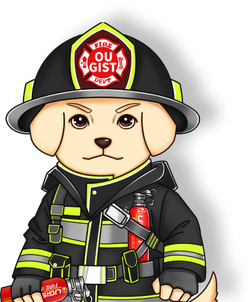Wildfires are a natural part of many ecosystems, but their intensity and scope can vary widely. The severity of a wildfire is often classified using different levels to help emergency responders, authorities, and communities gauge the potential threat and allocate resources accordingly. In this blog post, we'll delve into what a Level 2 wildfire entails, its characteristics, and the strategies employed to manage it.


Defining a Level 2 Wildfire: A Level 2 wildfire is categorized as a moderate fire incident that possesses a greater level of complexity and challenges compared to lower-level fires. While it may not reach the intensity of a Level 3 or 4 wildfire, a Level 2 fire still requires significant attention and resources to control effectively.

Characteristics of a Level 2 Wildfire:
-
Size and Intensity: A Level 2 wildfire can cover a larger area and exhibit higher intensity than smaller fires. The flames and heat generated can be substantial, posing a threat to nearby vegetation, structures, and wildlife.
-
Behavior: These fires may exhibit more erratic behavior, including spotting (small embers carried by the wind and starting new fires ahead of the main blaze) and fire whirls (mini-tornadoes of fire). This unpredictability complicates firefighting efforts.
-
Impact: Level 2 wildfires can cause damage to local ecosystems, disrupt communities, and affect air quality over a broader area. Smoke and ash may travel significant distances, impacting visibility and health.
-
Resources Needed: Managing a Level 2 wildfire requires a coordinated effort from firefighting agencies, including ground crews, aircraft, and specialized teams. Adequate resources must be deployed to suppress the fire and prevent it from escalating to higher levels.
Management Strategies: Addressing a Level 2 wildfire involves a combination of proactive measures and rapid response strategies. Some key approaches include:
-
Early Detection: Advanced fire detection technologies, such as satellite monitoring and remote sensors, play a crucial role in identifying and locating Level 2 wildfires early. This enables quicker response times and better resource allocation.
-
Air Support: Helicopters and air tankers are often employed to drop water and fire retardants on the fire's perimeter, slowing its spread and aiding ground crews in containment efforts.
-
Firebreaks and Containment Lines: Firefighters create firebreaks—cleared areas with minimal vegetation—to hinder the fire's progression. Additionally, containment lines are established to control the fire's spread by removing potential fuel sources.
-
Evacuation and Public Safety: As a precaution, communities in the fire's path may be evacuated to ensure the safety of residents. Evacuation plans and routes are communicated in advance to minimize chaos and facilitate smooth evacuations.
-
Collaboration: Level 2 wildfires often require cooperation between local, regional, and potentially state and federal agencies. Mutual aid agreements ensure that resources can be shared to address the fire effectively.


